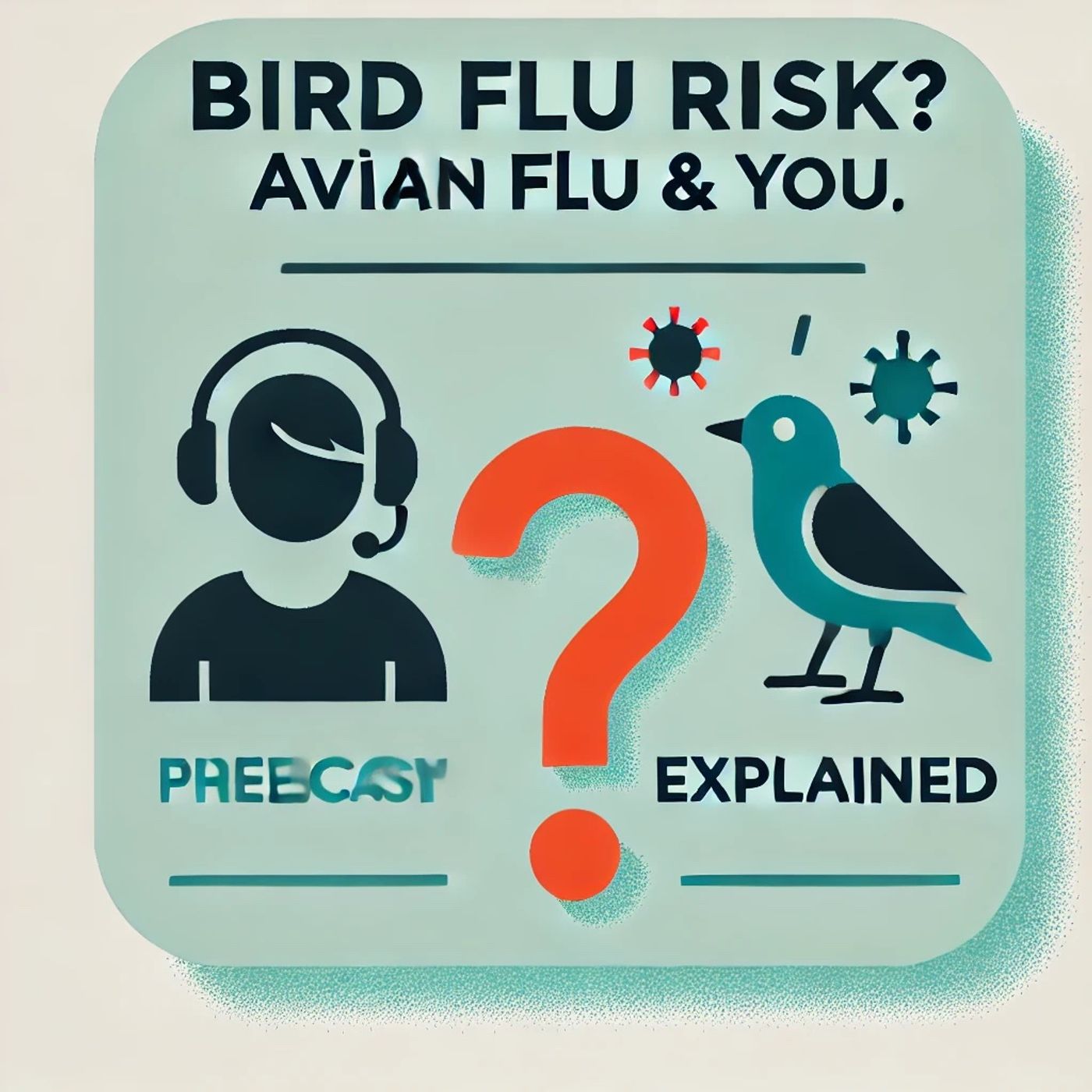Podcast Episode Details
Back to Podcast Episodes
Bird Flu Risk Guide: Understand Your Chances and Stay Safe with Expert Advice on Avian Influenza Exposure
Welcome to Bird Flu Risk? Avian Flu & You, Explained—a three-minute guided risk assessment to help you understand your personal risk and make informed decisions.
Let’s start with the basics. Bird flu, or avian influenza—most recently the H5N1 strain—is primarily a disease in birds and some mammals, but it can, on rare occasions, infect humans. According to the CDC, the **overall public risk is currently assessed as low**, but this risk varies widely depending on your occupation, where you live, your age, and underlying health conditions.
**What raises your risk?**
You’re at **higher risk** if you work closely with poultry, dairy cows, or other animals likely to be infected. This includes:
- Poultry and dairy workers
- Veterinarians and animal health responders
- Slaughterhouse and animal processing workers
- Those handling sick or dead birds, or cleaning contaminated environments
- Hunters of wild birds or people who keep backyard flocks
If you only encounter poultry at the grocery store, your risk is much lower.
Your **location** also matters. If you live in or travel to areas with active outbreaks in birds or cattle, risk climbs, especially if local controls are limited. However, most urban dwellers with no animal contact remain at low risk.
**Age** is another factor. While most infections appear among younger adults exposed through work, older adults—particularly seniors—face a greater chance of severe illness if infected. Conversely, children have had the lowest risk globally, but there are exceptions.
Underlying **health status** is key. Anyone with chronic conditions like heart, lung, or immune suppression is more vulnerable to serious outcomes, just as we see with seasonal flu.
Now, imagine a quick **risk calculator**:
- Are you a farmworker who helps cull poultry or milk cows? You’re in a higher risk group—PPE and strict hygiene are critical.
- Are you a retiree living in a city, never near live poultry or cows? Your risk is almost nil—no special precautions needed.
- Are you an immunocompromised person with a backyard flock? Take added care: avoid direct contact and always use gloves and a mask when cleaning or handling birds.
The World Health Organization and recent U.S. surveillance updates both emphasize: most people have **little to fear** from bird flu right now. While transmission between animals continues, especially where controls are lacking, no sustained human-to-human spread has been observed as of October 2025, and new human cases are extremely rare in the U.S.
**What can you do?**
- For high-risk individuals—especially those with animal exposure or health conditions—use recommended protective equipment, seek prompt antiviral care if you develop flu-like symptoms after possible exposure, and stick to strict hygiene.
- For most people, awareness is enough. Eating cooked poultry and dairy is safe; the virus doesn’t survive proper cooking. Keep an eye on public health alerts, but routine precautions are sufficient.
**When to be vigilant?** If you work with or around animals during an outbreak, follow all safety protocols and monitor your health. Seek medical advice promptly for unusual symptoms after potential exposure.
**When not to worry?** If you lack close, repeated contact with live birds or potentially infected animals, and your health is generally good, your personal risk remains very low.
Thank you for tuning in to Bird Flu Risk? Avian Flu & You, Explained. Come back next week for more health clarity. This has been a Quiet Please production—for more, check out QuietPlease Dot A I.
For more http://www.quietplease.ai
Get the best deals https://amzn.to/3ODvOta
This content was created i
Published on 16 hours ago